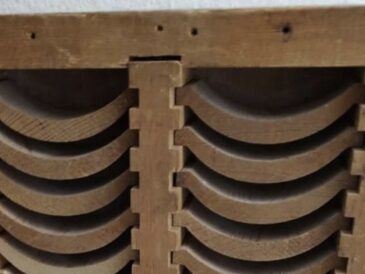As we look back through the various gadgets and appliances that have shaped our kitchen experiences over the years, one particularly classic item stands out: the stovetop toaster. While modern pop-up toasters have largely taken over, there was a time when toasting bread was an entirely different experience. The stovetop toaster, with its minimalist design and practicality, was a marvel of its time, embodying a blend of ingenuity and simplicity that was so characteristic of mid-20th-century kitchen technology.
In this article, we’ll dive into the fascinating history of the stovetop toaster, exploring its design, function, and cultural significance in kitchens around the world.
The Stovetop Toaster: An Icon of Simplicity
Unlike the pop-up toasters we are so familiar with today, the stovetop toaster was a very different kind of appliance. These devices were simple, functional, and required a bit of hands-on involvement. The design of the stovetop toaster was incredibly straightforward: a metal frame with a wire rack that held the bread upright, typically positioned over an open flame or on a stovetop burner.
To use it, the toaster was placed directly onto a stovetop burner, and heat from the burner was used to toast the bread. The user would carefully place the bread on the wire racks and watch it as it browned to perfection. The toasting process required attention, as the bread could burn quickly if left unattended. It was a process that demanded a bit more patience, but that was part of the charm. The slight anxiety of waiting for the toast to be just right and the anticipation of spreading butter on a warm, crispy slice was an experience that many people fondly remember.
Early Beginnings: The Birth of the Stovetop Toaster
The stovetop toaster was not just an invention of convenience; it was born out of necessity. In the early 1900s, many households didn’t have the luxury of electric-powered toasters, and kitchen technology was still in its infancy. Toasters as we know them today had not yet been fully developed, so alternative methods for toasting bread had to be found. This led to the creation of simple stovetop devices that could do the job without the need for electricity.
The stovetop toaster was designed to be used on gas or electric stovetops, depending on the household’s cooking system. Its simple construction meant that it could be produced inexpensively, making it accessible to the average home. The key to its function was its wire rack, which held the bread in place while the heat from the stovetop evenly toasted it. The device could be used multiple times, and with a little care, it could last for years, making it an economical and sustainable appliance.
How Did the Stovetop Toaster Work?
The stovetop toaster worked by utilizing heat from a stovetop burner. The user would place the toaster directly on the burner, and the bread would be positioned inside the metal rack. As the burner heated up, the heat would be transferred to the metal frame of the toaster, which in turn would toast the bread. Some models even had a mechanism that allowed the user to flip the toaster, ensuring that both sides of the bread were evenly browned.
The simplicity of the device was one of its greatest strengths. The absence of any complex electronics or gears meant that it was durable, easy to use, and inexpensive to produce. But it also required the user’s full attention. Unlike today’s pop-up toasters, which automatically eject the toast once it reaches the desired level of crispness, the stovetop toaster required constant monitoring. One had to stay close to the stovetop, carefully watching the bread to ensure it didn’t burn or undercook.
This process was one of the key features of the stovetop toaster that made it so appealing during its time. It connected the person to the process in a way that modern appliances often do not. In a sense, the user was actively involved in the creation of the perfect piece of toast, and that involvement made it a more personal, hands-on experience. It wasn’t just about getting the job done quickly; it was about enjoying the ritual of toasting bread.
The Cultural Significance of the Stovetop Toaster
In the mid-20th century, the stovetop toaster became a staple in many homes. It was a practical solution to the lack of electric toasters and a charming relic of an era when kitchens were filled with simple, resourceful gadgets that required a bit of skill and attention. The stovetop toaster represented the ingenuity of the time, combining a minimalist design with functionality. It was a true symbol of the resourcefulness that characterized the period.
The act of making toast with a stovetop toaster also had cultural significance. The process of toasting bread was no longer just about making breakfast; it became an opportunity to connect with the food preparation process. Families gathered around the kitchen, chatting while they waited for their bread to reach the perfect golden brown. It wasn’t just about the food; it was about the experience of sharing time together, however simple it might seem.
In an age of fast food and instant gratification, the stovetop toaster served as a reminder that even the smallest tasks could be savored. It was a time-consuming process, but that was precisely the point—it was a break from the hustle and bustle, a moment to slow down and enjoy the little things. For many, using a stovetop toaster was not just about convenience, but about savoring the simplicity of daily life.
The Rise of the Electric Toaster and the Decline of the Stovetop Model
By the mid-20th century, the invention of the electric pop-up toaster began to change the way people made toast. These new toasters were more convenient and required far less attention than the stovetop models. With the push of a button, the electric toaster would automatically toast the bread and eject it once it was done, making it an ideal appliance for those who valued speed and efficiency.
As electric toasters became more affordable and accessible, the stovetop toaster began to fade into obscurity. It was gradually replaced by the more modern designs, which required less skill, less time, and less involvement. The stovetop toaster, with its manual operation and slow, methodical process, was eventually relegated to the status of a vintage item, remembered fondly by those who had used it but largely forgotten by newer generations.
Despite this shift, the stovetop toaster continued to be cherished by those who appreciated its simple design and the personal connection it fostered between the user and their food. It became a nostalgic item, evoking memories of simpler times and more hands-on kitchen experiences.
A Revival of Interest in Vintage Kitchen Gadgets
In recent years, there has been a resurgence of interest in vintage kitchen gadgets, including the stovetop toaster. People are increasingly looking for ways to reconnect with the past, and these old appliances have found new life in a world that often feels dominated by convenience and technology. The slow, deliberate process of using a stovetop toaster appeals to many who are seeking a more mindful approach to cooking and eating.
In addition, the popularity of retro and vintage home décor has helped bring attention to these once-forgotten kitchen tools. The stovetop toaster, with its clean lines and functional design, fits perfectly into modern kitchens that embrace a vintage aesthetic. It serves as a reminder of a simpler time, when appliances were built to last and were valued for their utility and design rather than for their speed or high-tech features.
Conclusion
The stovetop toaster is a beloved relic of the past, a symbol of an era when simplicity and ingenuity went hand in hand. It was an appliance that required attention, patience, and a personal touch, making the simple act of toasting bread a more engaging and meaningful experience. Though it has largely been replaced by electric toasters, the stovetop toaster remains an important part of kitchen history. It reminds us of a time when we were more connected to the process of cooking and eating, and it serves as a nostalgic reminder of the value of simplicity, quality, and personal engagement in our daily lives.
As we continue to embrace the fast-paced world of modern technology, there’s something comforting and reassuring about remembering the classic kitchen items like the stovetop toaster. It is a symbol of how far we’ve come, but also of the timeless joys that can be found in the simplest moments of daily life.





